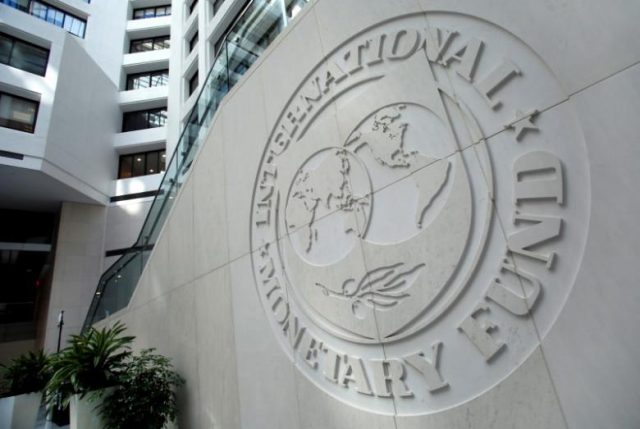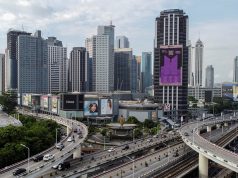MANILA – The Philippines will likely remain a growth leader in Southeast Asia, the International Monetary Fund (IMF) and regional think tank ASEAN+3 Macroeconomic Research Office (AMRO) said, pencilling a 6.6% forecast for 2017 compared to 2016’s 6.9%.
The IMF expects Philippine gross domestic product (GDP) to expand by 6.6% this year, according to its World Economic Outlook (WEO) published Tuesday. The multilateral lender retained the tempered outlook that it gave during its annual health check last August.
“The 6.6% growth forecast for 2017 is the same as we released during the recent Article IV consultation. We see continued robust domestic demand driven by investment and consumption, and fiscal policy is supportive of growth; hence, no change to our forecast,” Yang Yongzheng, IMF’s new country representative, said in an e-mailed response to reporters’ queries. Growth was expected to clock 6.8% back in April.
IMF representatives who visited Manila on July 26-Aug. 9 said the Philippines is poised to enjoy “very strong” growth in the coming years, supported by the passage of the first of up to five tax reform packages now being tackled at the
Senate as well as the government’s “rightfully aggressive” spending plans on infrastructure.
If realized, the IMF growth forecast means the Philippines will be able to hit the 6.5-7.5% growth goal the government has set for the year.
Philippine GDP grew by 6.4% last semester, with economic managers expecting faster growth this semester as more infrastructure projects are rolled out and with the onset of the Christmas season. Central bank Governor Nestor A. Espenilla, Jr. has said the government’s growth target remains “attainable” so far.
The Philippines will lead ASEAN-5 this year, the IMF said, closely followed by Vietnam with 6.3%; Malaysia, 5.4%; Indonesia, 5.2% and Thailand with 3.7%.
“In the rest of emerging market and developing Asia, growth is expected to be vigorous and marginally higher than in the April 2017 WEO,” the IMF said, projecting Asian economies to grow 5.6% this year, faster than 2016’s actual 5.4%.
The Washington D.C.-based multilateral lender sees China leading Asia growth this year with 6.8%, followed by India with 6.7%.
Philippine inflation is expected to remain manageable, averaging 3.1% this year and 3.0% in 2018, falling within the 2-4% target band set by the central bank.
For 2018, the IMF expects Philippine GDP to grow 6.7%, slower than the 6.9% estimate announced earlier this year and missing the state’s 7-8% goal.
Tuesday also saw AMRO cutting its Philippine growth outlook for this year and 2018 due to a slower rise in investment and consumption.
“The Philippine economy is expected to grow by 6.6% this year before quickening to 6.8% in 2018 as public sector infrastructure spending gains pace while domestic consumption and exports remain buoyant,” AMRO lead economist Sumio Ishikawa said in a statement.
However, these projections are slower than the 6.8% and 7.0% initially pencilled for 2017 and 2018, respectively, in AMRO’s maiden Regional Economic Outlook report published in May.
“After the boost from election-related spending in 2016, the pace of economic expansion moderated to 6.4% in the first half of 2017 as fixed investment decelerated. Private consumption growth also slowed but nonetheless remained robust, supported by gains in employment and sustained remittance inflows,” the statement read.
At the same time, “[b]oth private consumption and exports are expected to remain buoyant going forward, while hurdles to budget execution are also gradually being overcome.”
However, AMRO flagged that delays in the planned infrastructure buildup “could dampen investment activity and undermine growth prospects.”
“The economy continues to have sound macro fundamentals, which should make it less vulnerable to shocks,” the statement read.
“However, AMRO notes that failure to accelerate infrastructure investments through the ‘Build, Build, Build’ program owing to, among others, absorptive capacity constraints of the government and private sector participants could dampen investment activity and undermine growth prospects,” it added.
“A delay in infrastructure projects execution also risks having the additional revenues from the comprehensive tax reform program being diverted to other expenditure items with little growth potential.”
The expected infrastructure rollout pickup, AMRO said, may widen the current account deficit in the next three years which, in turn, could “put strong depreciation pressures on the peso.”
“Likewise, brisk fiscal spending adding to an already buoyant domestic demand, rapid credit growth and rising inflation could give rise to overheating pressures in the near term, although this risk may diminish over the medium term as the economy’s productive capacity improves.”










